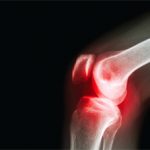
Individualized exercise improves RMD symptoms
without negative impact to organs.
Image Credit: Photographee.eu/shutterstock.com
ROME, Italy—The medical environment is increasingly adapting to the possibilities of optimizing care by individualizing medical treatment and tailoring treatment to disease phenotypes. Data suggest that individualizing exercise therapy, an important treatment modality for rheumatic and musculoskeletal diseases, can help control disease, maximize function, minimize functional barriers and decrease the risk of co-morbidity.1,2,3
Personalizing exercise interventions implies each patient is physically assessed and that exercise interventions are adjusted to address individual deficits and designed based on current knowledge about rheumatic and musculoskeletal disease (RMD) phenotypes, functioning, co-morbidity, accessibility and current knowledge regarding exercise intensity and progression for the specific phenotype. For example, individuals who have a low sensitivity to their exercise program may need to increase intensity or vary activity to achieve the intended response. Others who experience severe RMD with significant involvement of inner organs may need close monitoring and frequent adjustments of exercises.
Exercise therapy is generally recommended as a primary component of RMD management;1 however, there are indications that the intensity of exercise therapy has been suboptimal.2 In general terms, the American College of Sports Medicine recommendations for the prescription of exercise apply to people with RMDs; however, individual and disease-specific adjustments are needed.3
What’s Appropriate?
At EULAR 2015, the annual congress of the European League Against Rheumatism (EULAR), a team of international experts synthesized the data on the beneficial effects of exercise for different RMDs. Specifically, the session focused on appropriate intensity levels of exercise in RMDs, how to measure intensity, barriers and facilitators for applying optimal exercise intensity, and potential adverse effects of exercise.4
Research demonstrates individualized exercise improves RMD symptoms without negative impact to organs and improves cardiovascular health and disease activity in inflammatory diseases, such as rheumatoid arthritis, spondyloarthropathies and myositis.5-9
Based on the knowledge of an increased risk of cardiovascular disease in certain RMDs, Hanne Solveig Dagfinrud, PT, PhD, emphasized that exercise prescriptions to manage RMDs have become increasingly important. Exercise programs should aim to improve cardiovascular fitness and reduce cardiovascular risk factors. The level of intensity of cardiorespiratory fitness and muscle strength should be individually assessed and exercise should be tailored accordingly.
Several simple clinical tests can be used to determine the level of strength, balance and aerobic capacity of each individual to optimally tailor exercise to each person. A heart rate monitor and/or a scale for personal rating of exertion (i.e., Borg Scale) may be used to control the intensity level.



